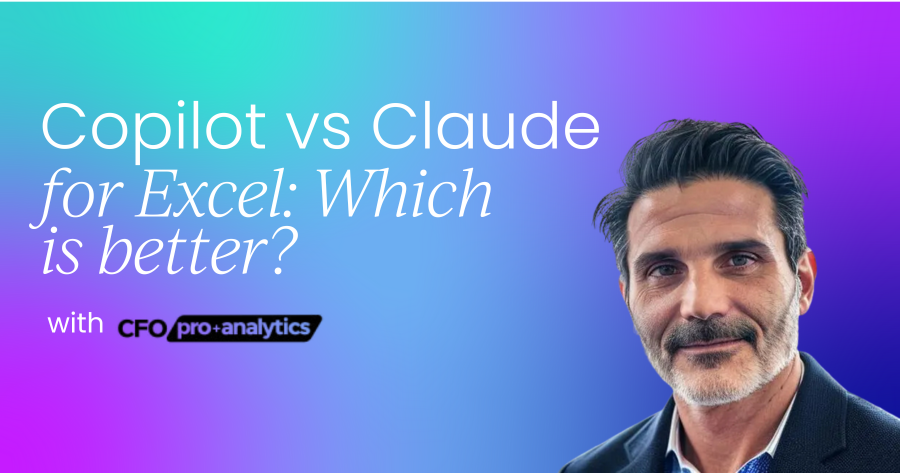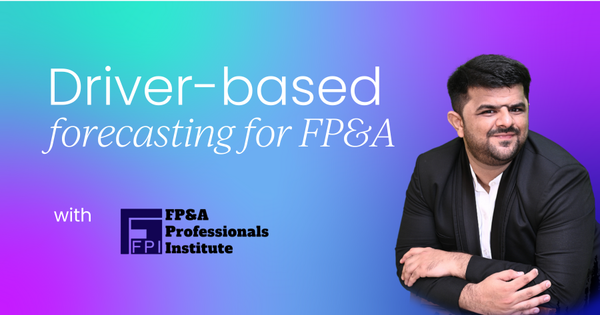Most forecasts begin with a hopeful number like, “Let’s grow revenue by 10% next year. This sounds good on paper. But where exactly is that 10% coming from?
More customers? Higher prices? Better conversion?
If you don’t know the drivers behind your numbers, your forecast is basically just a fancy guess.
That’s where driver-based forecasting changes the game.
Instead of projecting numbers in a vacuum, this approach ties your financials to actual business activities. You model how marketing spend, headcount, churn, or pricing moves the bottom line.
It’s more dynamic. More realistic. And way more useful when the business environment shifts.
What is driver-based forecasting?
It’s forecasting that mirrors real-world business behaviour.
Instead of saying, “Let’s grow revenue,” you say:
- How many customers do we expect?
- What’s the average order value?
- How often do they buy?
You break revenue into components that matter. That’s the power of driver-based thinking.

Why do finance teams love it?
Because it gives you…
- More accurate forecasts: Forecasts based on activities, not assumptions.
- Quick what-if scenario planning: Want to see the impact of a 5% drop in conversion or a 20% jump in churn? Tweak the driver and gain instant insights.
- Cross-functional alignment
- Clear Accountability: Sales owns volume. Marketing owns lead gen. Finance connects the dots.
- Simple reforecasting when things change: Change the driver, update the forecast. No rebuild needed.
It’s not just about better modelling. It’s about smarter decision-making.
Picking the right drivers
Ask yourself: What really moves the needle in this business?
For SaaS, it might be active users and churn. For retail, maybe footfall and basket size. For services, billable hours, and utilization.
Don’t overcomplicate it. Focus on the 3–5 drivers that really matter.
How to build one
- Model structure: Use Excel or any tool you like. Set up timelines - monthly or weekly.
- Driver sheet: This is your control panel. Input assumptions like the number of customers, churn %, and conversion rates.
- Link drivers to outputs.
- Connect to P&L, balance sheet, and cash flow: Build dynamic links so financials update automatically.
- Test scenarios: Want to explore a 10% drop in leads or 15% increase in price? Adjust, observe, plan.
This makes your model flexible and ready for anything.

Common mistakes to avoid
- Too many drivers: Makes the model hard to use and maintain.
- Wrong drivers: Track what matters, not just what’s easy.
- Overcomplicating: If updating it feels like surgery, it won’t get used.
- No buy-in: Involve stakeholders. If they don’t trust the model, they won’t use it.
- One-time setup: It’s not ‘build and forget.’ Update your assumptions regularly.
Keep it clean. Keep it collaborative. And keep it updated.
Real-world examples
SaaS business
- Revenue: active users, ARPU, churn
- Costs: CAC, support headcount
Retail brand
- Revenue: foot traffic, conversion, basket size
- COGS: units × cost per unit
Manufacturing unit
- Revenue: units produced, pricing
- Costs: raw materials, machine downtime
Professional services
- Revenue: billable hours, hourly rate
- Costs: headcount, utilization
Every industry has its own drivers. The trick is finding yours and focusing relentlessly on them. Driver-Based Forecasting helps you move from static budgets to living models. It connects finance to what’s actually happening in the business.
It forces teams to think about why numbers change, not just what the numbers are. If you’re in FP&A and want to make your models more accurate, your insights more actionable, and your seat at the strategy table more permanent, start with your drivers.



 Follow us on LinkedIn
Follow us on LinkedIn





